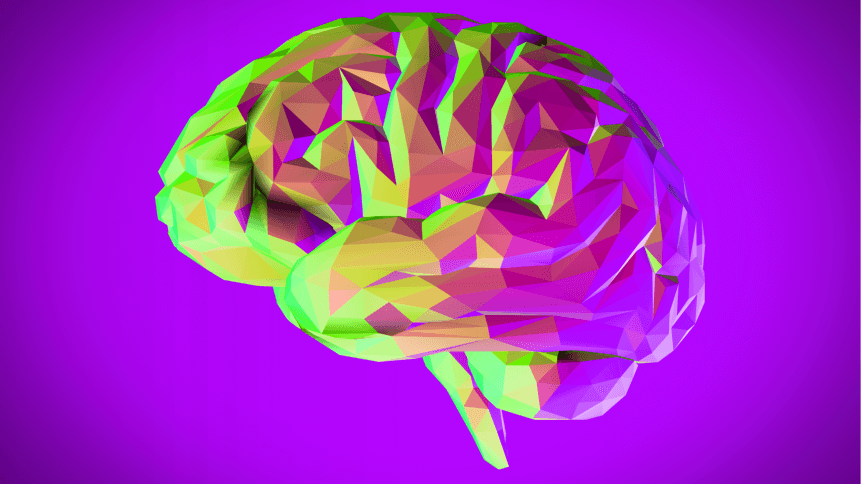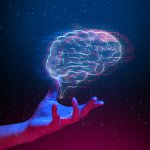Tackling the artificial intelligence IP conundrum

- AI is playing a growing role in producing new creations and ideas
- As it evolves and becomes more autonomous, there are questions over the technology’s claim to Intellectual Property rights
- TechHQ spoke to tech and law expert Dr. Ryan Abbott to discuss the limitations of a system “where AI and human activity are treated very differently”
Artificial intelligence has become a general-purpose technology. Not confined to futuristic applications such as self-driving vehicles, it powers the apps we use daily, from navigation with Google Maps to check deposits from our mobile banking app. It even manages the spam filters in our inbox.
These are all-powerful, albeit functional roles. What’s perhaps more exciting is AI’s growing potential in sourcing and producing new creations and ideas, from writing news articles to discovering new drugs — in some cases, far quicker than teams of human scientists.
With every new iteration in software design, computing power, and ability to leverage large data sets, AI’s potential as an initiator of ideas and concepts grow, and this raises questions around its rights to Intellectual Property (IP).
AI & IP
Professor of Law and Health Sciences at the University of Surrey, Dr. Ryan Abbott’s work is focused on the meeting of law and technology — in particular, the regulation of AI. While Abbott doesn’t believe AI should be entitled to its own IP, he believes the time is right to discuss the ability of people to own IP generated autonomously by AI or risk losing out on the technology’s full potential.
“Right now, we have a system where AI and human activity are treated very differently,” Abbott told TechHQ.
Drug discovery is a tangible example of how AI contributes to society. Technology is making the discovery of new drugs faster, cheaper, and more successful. It’s been used this way for decades, helping to identify new drug targets or validate drug candidates, and to help design trials in ways that can potentially shorten drug development timeframes, bringing treatments to market faster. But the critical nature of patent protection in life sciences, drug development, in particular, is holding back these advances.
That’s because, when it comes to AI-generated content and ideas, AI tends to be seen by experts and lawmakers as a tool, and not the source of the creation or discovery. In the same way that a paintbrush doesn’t get the credit for an oil painting and CAD software isn’t credited for the designs of an architect, AI is perceived as a vehicle to an end product. The trouble is, current laws are not consistent and clear cut. In the UK, where a work lacks a traditional human author, the producer of the work is deemed the author. In the US, the inventor is the person who conceives the idea. In either case, neither human may know what the AI system will produce or discover.
While patent rules in life sciences highlight the legal constraints on AI in research and development, these same challenges affect everything from the development of components for cars to spacecraft. The problem will become increasingly apparent as AI continues to improve, and people do not.
The consensus among legal experts is that it’s not clear whether AI could carry out the understood rights and obligations of an IP owner. IP rights are restricted to ‘natural persons’ and ‘legal entities’ such as businesses. The European Union reportedly abandoned plans to introduce a third type of entity ‘electronic personality’ in 2018 after pressure from 150 experts on AI, robotics, IP, and ethics.
Speaking to Raconteur previously, Julie Barrett-Major, consulting attorney at AA Thornton and member of the Chartered Institute of Patent Attorneys’ International Liaison Committee, explained: “With patent ownership come certain obligations and responsibilities or at least opportunities to exercise these. For example, to enforce the rights awarded, the owner can sue for infringement or at least indicate a willingness to do so to maintain exclusivity.
“[…] the patent must be renewed at regular intervals, and there are other actions that need to be taken to ensure the rewards are not diluted, such as updating the government registers of patents with details of changes in ownership details, informing of licensees and so forth.”
Abbott argues that, ultimately, the limitations of current IP frameworks may force organizations to continue to use people, where a machine might be more efficient.
Last year, Siemens was unable to file for multiple patents on inventions they believed to be patentable because they could not identify a human inventor. The involved engineers stated that the machine did the inventive work. Abbott himself is carrying out a legal test case, filing patents for two inventions made autonomously by AI. Both have been rejected from the US, UK, German, and European patent offices on the basis they failed to disclose a human inventor. The rejections are under appeal, but the idea to help raise dialogue on the issue.
“Most of the time today AI is just working as a tool and helping augment people, but machines are getting increasingly autonomous and sophisticated, and increasingly doing the sorts of things that used to make someone an inventor,” Abbott said.
YOU MIGHT LIKE

Rolls-Royce leads charge in ethical AI for Industry 5.0
The current status quo means that law can get in the way of AI development in certain areas, but not others. That means AI’s benefits are not evenly spread across industries. While parents are important to drug development, for example, they are less important when it comes to making software. This imbalance could lead to the emergence of shady IP practices in certain sectors when it comes to using AI. The “workaround”, says Abbott, is people simply not disclosing AI’s role in creating something valuable, whether that’s an article, video, or song. “Someone can just list themselves as the author and no one is going to question that.”
The issue of patents and intellectual property in the fields of academic research, for many of us, might not seem like it’s worth our consideration. But the broader legal concept Ryan looks to highlight — that we should question current standards of AI accountability and ownership — affect how AI is being used around us.
“Across all areas of the law, we are seeing the phenomenon of artificial intelligence stepping into the shoes of people and doing the sorts of things that people used to do,” said Abbott.
Ultimately, for AI to be used to its full potential, there must be an open discussion, public consultation, and debates on the current litigation surrounding AI. That’s now happening. The issue has had recent attention by the World Intellectual Property Organization (WIPO) while the UK Intellectual Property Office just announced a public request for comments on whether the IP system is fit for purpose in light of AI. The US has just completed a similar consultation.
“These efforts are a solid start to getting a diverse range of input from stakeholders,” said Abbott. “In time, legislators should get involved.”









